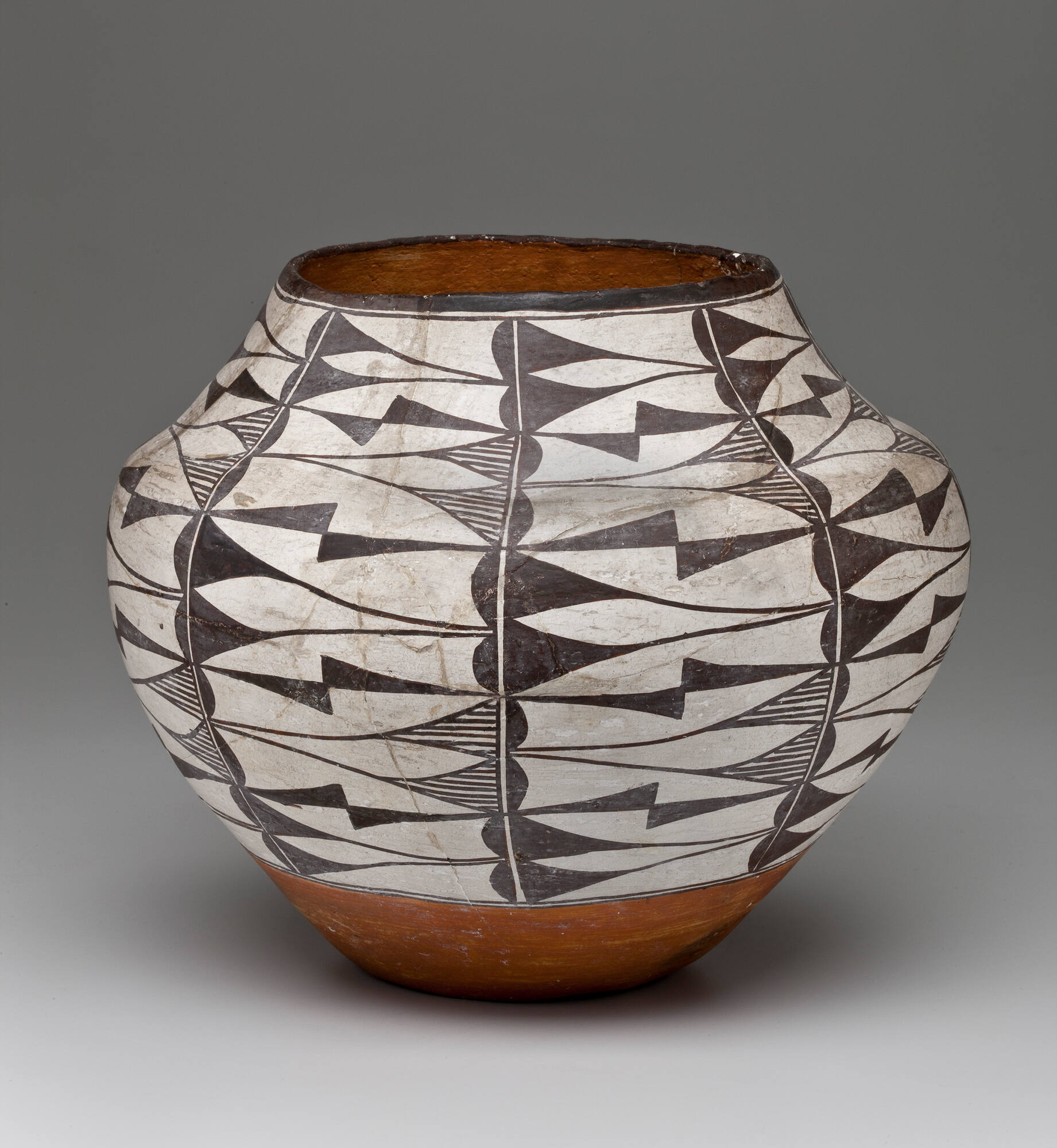
Object Details
Culture
Acoma (USA)
Date
19th Century
Medium
Redware
Dimensions
8 1/2 × 10 inches (21.6 × 25.4 cm)
Credit Line
Gift of Helen Putnam (Eugene P.) Andrews
Object
Number
77.050.001
BRIEF DESCRIPTIONThis is a 19th century water jar made in the Acoma Pueblo in New Mexico.WHERE WAS I(…)
BRIEF DESCRIPTIONThis is a 19th century water jar made in the Acoma Pueblo in New Mexico.WHERE WAS IT MADE?Acoma Pueblo is a Native American settlement located 50 miles west of Albuquerque, New Mexico, built on top of a 367 foot tall mesa. It is regarded as the oldest continuously occupied settlement in the US, having been founded in the 12th century.HOW WAS IT MADE?Acoma potters are blessed with one of the finest natural clay sources. When this clay is mixed with crushed potsherds (fragments of old pots) it produces a very thin-walled and lightweight pottery. Acoma jars are made using the coil method–the walls of the jar are successively built up with long coils of clay. A white clay, much like the kind used in fine porcelain, is diluted to make a slip that is applied to create a white background for the dark brown designs. After a few layers of white slip have been applied, the surface is burnished and designs are painted on using a dark slip.WHY DOES IT LOOK LIKE THIS?Traditionally, jars of this form were made to carry water over long distances. The concave base of the vessel would make it easier to balance on the head. Notice how thin the walls are; thin walls make for a lightweight vessel, which helps to minimize the overall weight of the jar when full of water. Also notice how the vessel is narrower at the top; this was to prevent the water from spilling out as it was carried. This particular pot is decorated with a geometric design.












